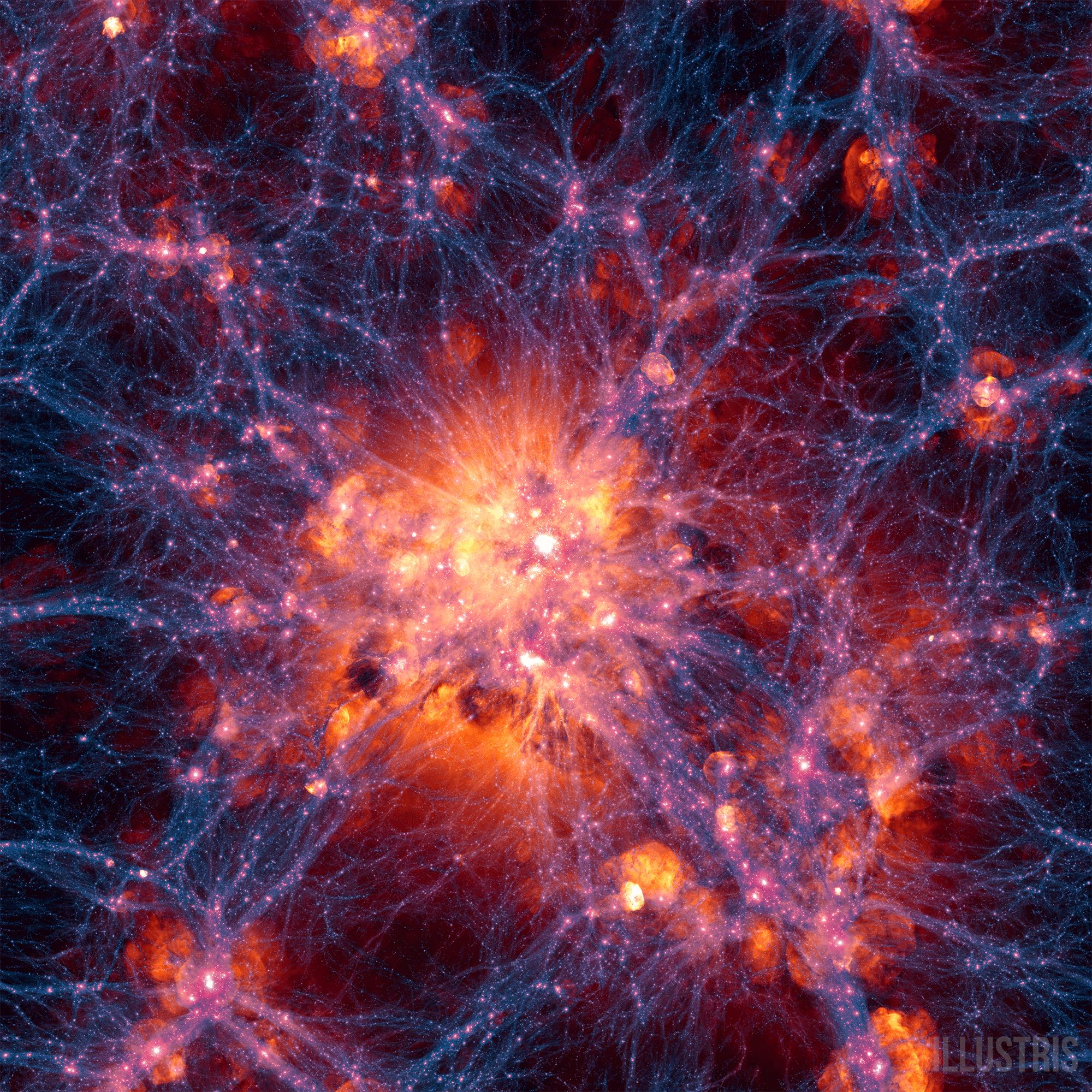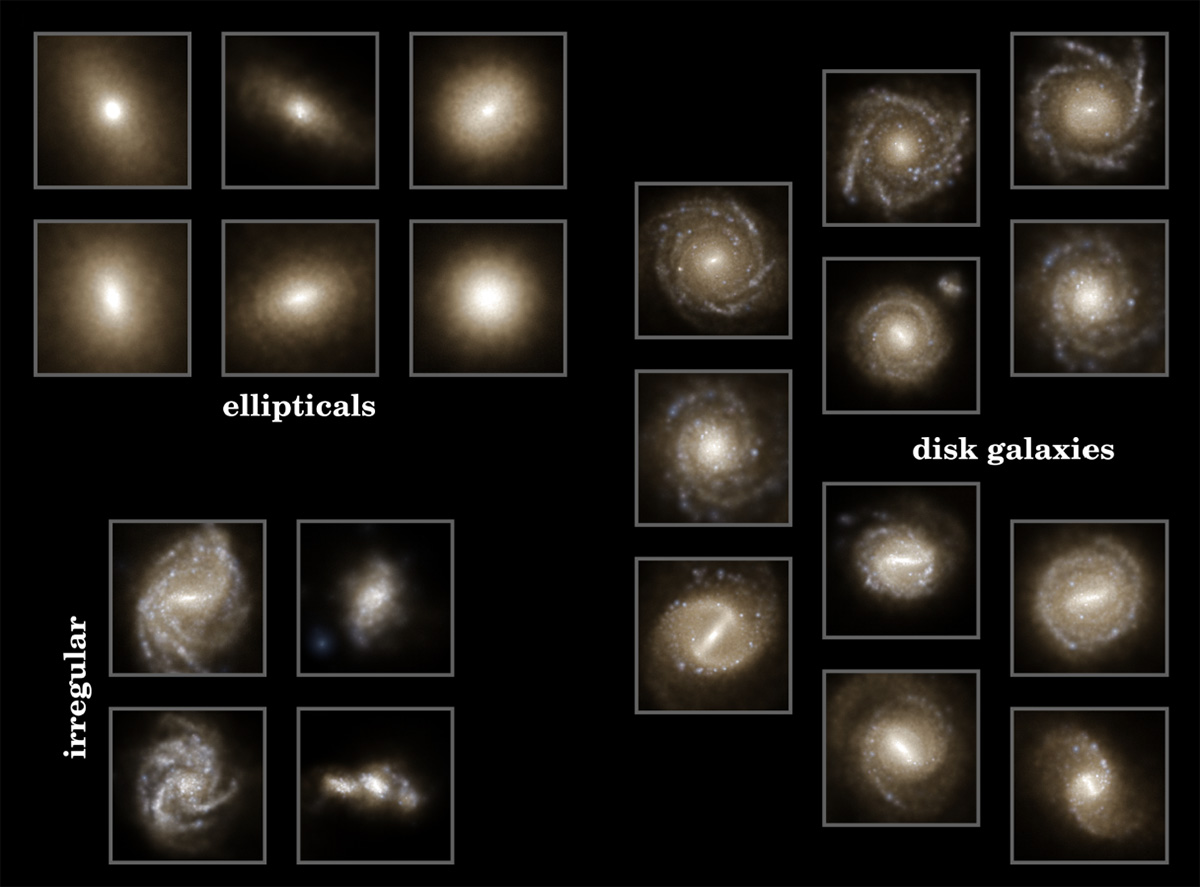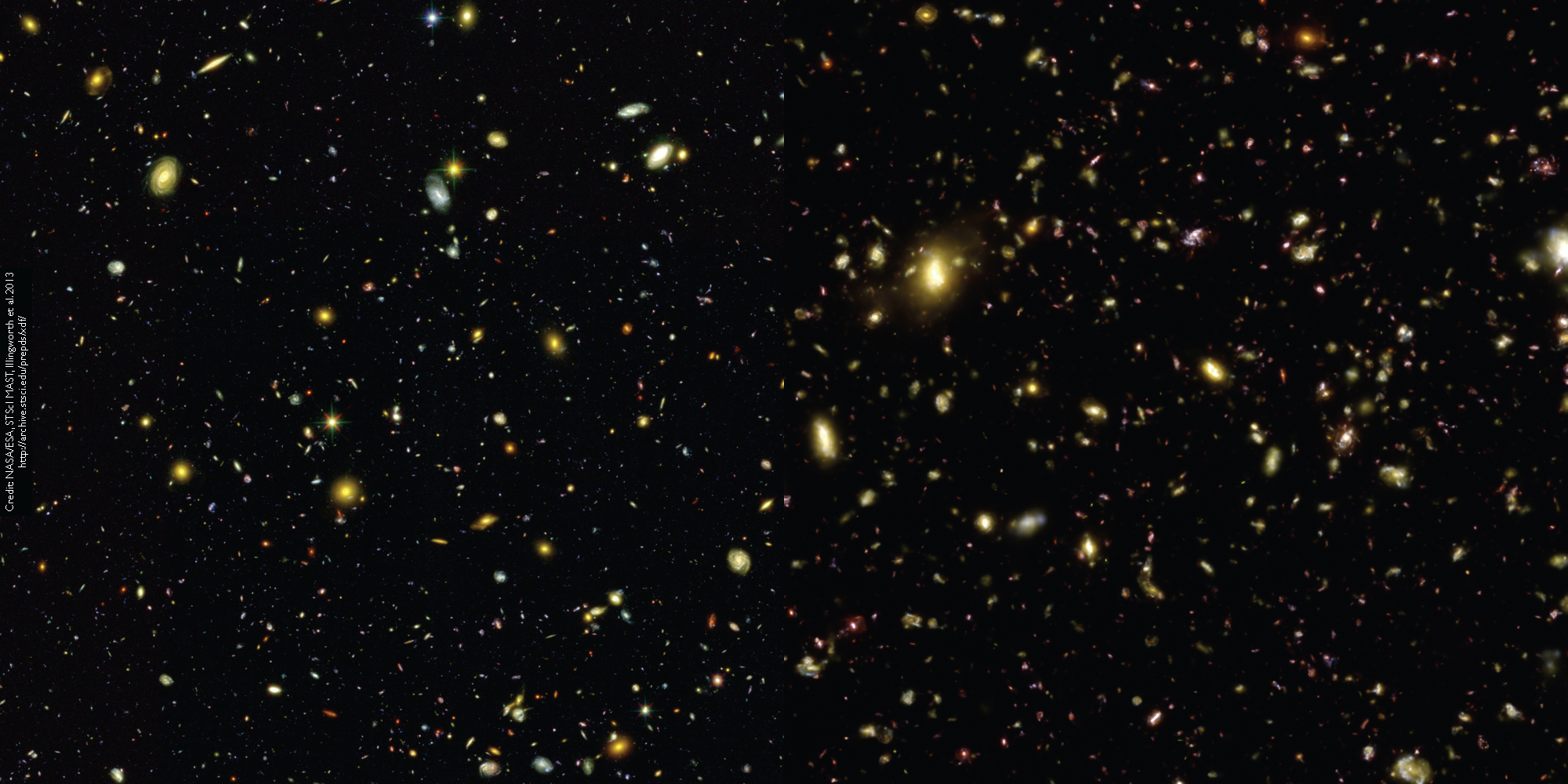Astronomers, astrophysicists and cosmologists have a very difficult and frustrating life. They can’t touch the star, exoplanet, galaxy, nebula or other celestial object they are studying, nor can they send a probe as a surrogate to take a sample or direct measurement (aside from the few lucky planetary scientists who’ve had missions within our solar system). The topics of their interests lie at distances most people can’t even comprehend. They are restricted to study their subjects with light—infrared, visible, ultraviolet, x-rays, gamma rays and radio waves—that the objects emit or reflect light from another source.

Early formation of a galactic cluster along webs of dark matter – Credit: “Illustris Collaboration” / “Illustris Simulation”.
So how do they study these distant objects? They take pictures in light that ranges across the spectrum, and they gather the spectra of these objects. The spectra consist of the light emitted and/or reflected from the objects, broken down it into its constituent parts which indicates what elements are absorbing or emitting the light energy.
Absorption line spectra
They then apply statistical analysis to the reams of data they’ve collected to try to understand and unlock the secrets of the cosmos. These scientists also create clever experiments and conduct observational surveys of the cosmos to provide them with data they can use to further develop their theories. And, they create models. They build computer models to test their theories and see if their models replicate or even come close to matching what they can see in the heavens above. These models are used to predict everything from stellar evolution, planetary atmospheres and black holes to galactic structures and clusters to name a few. There are those that aspire to reach even further. They want to model the evolution of the Universe from the dawn of the big bang to the present day.
A team lead by Mark Vogelsberger (MIT/Harvard-Smithsonian Center for Astrophysics) have done just that. They have developed a sophisticated model of a piece of the Universe (a cube about 326 million light-years (ly) on a side) that incorporates dark matter, as well as normal visible matter. The model, called Illustris, shows the evolution of the Universe from about 12 million years after the big bang to present day, and it maps out the cosmic webs of dark matter, along which normal visible matter collects. The amazing thing about this model is that they can zoom into it and display structures as small as galaxies like our Milky Way galaxy, which look like they could have been photographed by the Hubble telescope! These simulated galaxies exhibit similar chemistries to the galaxies we study today.

Collection of galaxies created in Illustris – Credit: “Illustris Collaboration” / “Illustris Simulation”
The team worked for over five years to develop this model, which incorporates over 12 billion 3D pixels to describe the sample of the Universe. If one were to try to run this simulation on a desktop computer, it would take over 2000 years to finish the calculations. Fortunately, the supercomputers used generated the simulation in 3 months of computer time. The end result contained over 41,000 galaxies embedded in the cosmic web of dark matter and visible matter.
Below is an amazing comparison of the Hubble eXtreme Deep Field image on the left and on the right side, an equivalent image produced by Illustris.

Hubble Extreme Deep Field on the left and Illustris’ simulation on the right! Credit: “Illustris Collaboration” / “Illustris Simulation”
Take a look at the fascinating videos of this project: Nature – “A Virtual Universe” (narrated and about 4 minutes long) and a longer, unnarrated video “To Compute the Laws of Nature”. Also, check out the Illustris, website for more detailed information and additional images and videos.
Till next time,
RC Davison
Ref: http://www.illustris-project.org/results/
(Note: If you visit the “arXiv” links for any of the references you should be able to view an earlier version of the published papers.)
